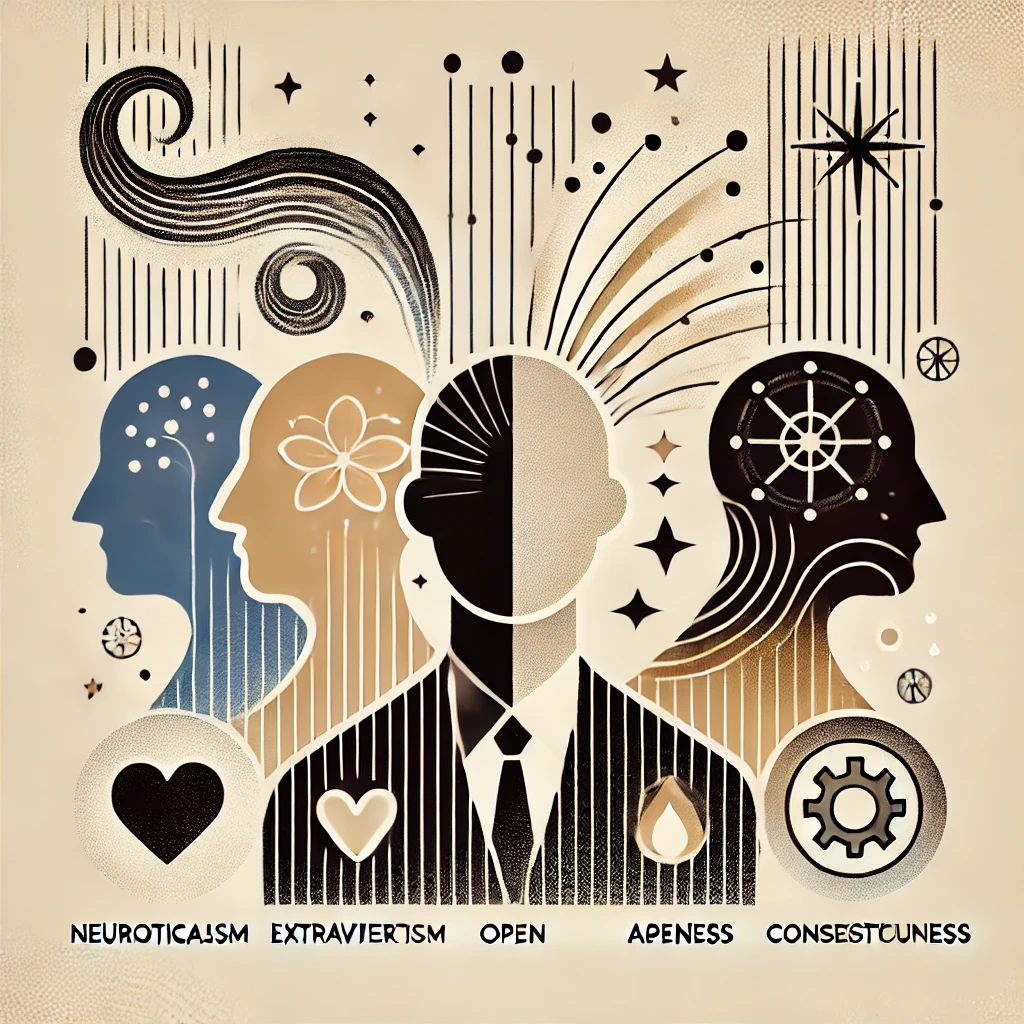
ChatGPT:
Understanding the Big Five: A Universal Framework for Personality
Personality psychology seeks to understand the individual differences that shape human behavior, emotion, and thought. Among the most robust and widely accepted models in the field is the Big Five Personality Traits, also known as the Five-Factor Model (FFM). Emerging from decades of lexical, statistical, and cross-cultural research, this framework organizes personality into five broad dimensions: Neuroticism, Extraversion, Openness to Experience, Agreeableness, and Conscientiousness. This essay explores the origins and development of the Big Five model, its operationalization through the NEO Personality Inventory-Revised (NEO-PI-R), and its cross-cultural relevance, including important variations in symptom expression tied to personality traits like Neuroticism.
⸻
The Origins and Development of the Big Five
The conceptual roots of the Big Five trace back to the lexical hypothesis proposed by Gordon Allport and Henry Odbert in the 1930s. They suggested that the most salient personality traits become encoded in language. Through dictionary analysis, they identified over 18,000 personality-descriptive terms, laying the foundation for modern trait theory.
In the 1940s and 1950s, psychologist Raymond Cattell refined this immense list using factor analysis, reducing it first to 171 traits and then to 16 core dimensions—known as the 16PF. However, the empirical robustness of this model was soon challenged, leading researchers like Ernest Tupes and Raymond Christal to identify five consistently replicable factors from Cattell’s data.
The model gained significant traction in the 1980s through the work of Lewis Goldberg, who coined the term “Big Five,” and Paul Costa and Robert McCrae, who developed the NEO-PI-R to empirically measure these five dimensions and their sub-facets. Today, the Big Five framework is considered the most scientifically grounded personality model, validated across disciplines and cultures.
⸻
The Five Factors and Their Facets
Each of the Big Five traits captures a broad domain of personality and is composed of six narrower facets, as defined by the NEO-PI-R:
• Neuroticism: Emotional instability, including traits such as anxiety, impulsiveness, and vulnerability.
• Extraversion: Sociability and energy, including warmth, assertiveness, and positive emotions.
• Openness to Experience: Intellectual curiosity and creativity, including fantasy, aesthetics, and openness to values.
• Agreeableness: Interpersonal warmth and cooperativeness, including trust, altruism, and empathy.
• Conscientiousness: Discipline and goal-directed behavior, including order, self-discipline, and dutifulness.
For example, a highly conscientious individual may be punctual, meticulous, and hardworking, while someone high in openness may be imaginative, artistic, and drawn to novel experiences. Conversely, individuals low in agreeableness may be critical or antagonistic, and those high in neuroticism may experience anxiety and mood swings.
⸻
NEO-PI-R: The Empirical Backbone
The NEO Personality Inventory-Revised (NEO-PI-R) is a psychometric instrument designed by Costa and McCrae to measure the Big Five traits and their 30 constituent facets. It consists of 240 items, rated on a five-point Likert scale, and typically takes 30–45 minutes to complete.
This inventory is extensively used in clinical, educational, organizational, and research settings. For instance, high scores in conscientiousness predict academic and occupational success, while high neuroticism is linked to a greater risk of mood and anxiety disorders. Agreeableness and extraversion are important for interpersonal functioning, while openness correlates with creativity and adaptability.
What distinguishes the NEO-PI-R is its facet-level granularity, enabling a more nuanced understanding of individual differences. This makes it not just a diagnostic tool but a lens for understanding human diversity in depth.
⸻
Cross-Cultural Applicability
One of the Big Five model’s greatest strengths is its cross-cultural robustness. Studies across more than 50 cultures—including East Asian, African, Latin American, and European societies—consistently replicate the five-factor structure, confirming its universality.
To ensure cross-cultural validity, the NEO-PI-R undergoes rigorous translation processes, such as back-translation, and is adapted with culture-specific norms. These adaptations are essential, as the same traits may manifest differently depending on cultural context.
For instance, extraversion in North American cultures may involve overt sociability and assertiveness, whereas in East Asian societies, it may take subtler forms like warm listening and quiet enthusiasm due to norms that favor modesty and restraint.
Similarly, while openness may predict artistic pursuits in Europe, in more traditional societies it might relate to adaptability or spiritual exploration. Despite such variations in expression, the underlying traits remain psychometrically stable, which speaks to the Big Five’s cross-cultural resilience.
⸻
Cultural Differences in Symptom Expression
An especially revealing area where culture and personality intersect is in how Neuroticism—the tendency toward negative emotionality—manifests across populations. Research indicates that individuals with high Neuroticism in Western cultures (such as the U.S. or U.K.) tend to report cognitive-emotional symptoms: sadness, anxiety, and low self-worth.
In contrast, individuals in East Asian cultures (such as China, Japan, or Korea) often report somatic symptoms, such as fatigue, headaches, or gastrointestinal distress. This reflects cultural norms around emotional expression and mental health stigma.
In collectivist societies, open expression of distress may be viewed as disruptive to group harmony, leading individuals to express suffering through physical complaints. In individualist cultures, emotional disclosure is more acceptable and often encouraged, resulting in greater reporting of psychological symptoms.
For example, a Chinese patient with high Neuroticism might visit a doctor complaining of chronic fatigue and chest tightness, which upon further assessment reveals an underlying depressive state. Meanwhile, a Canadian patient with the same level of Neuroticism might present directly with statements like “I feel hopeless” or “I worry constantly.”
These differences underscore the importance of culturally sensitive interpretation of personality assessments and mental health indicators.
⸻
Conclusion
The Big Five personality traits offer a scientifically grounded and cross-culturally valid framework for understanding the stable dimensions that shape human personality. From its origins in linguistic analysis to its current role in global psychological research and practice, the Big Five model—especially as operationalized through the NEO-PI-R—provides a comprehensive map of personality.
Its ability to transcend cultural boundaries while allowing for culturally specific expressions makes it an invaluable tool in psychology. Moreover, by illuminating the ways traits like Neuroticism interact with cultural norms, it deepens our understanding of human emotion, behavior, and the rich complexity of individual experience.
Whether applied in clinical therapy, leadership development, or academic research, the Big Five remains an enduring lens through which to view personality—rigorous in science, adaptable in scope, and universal in insight.

